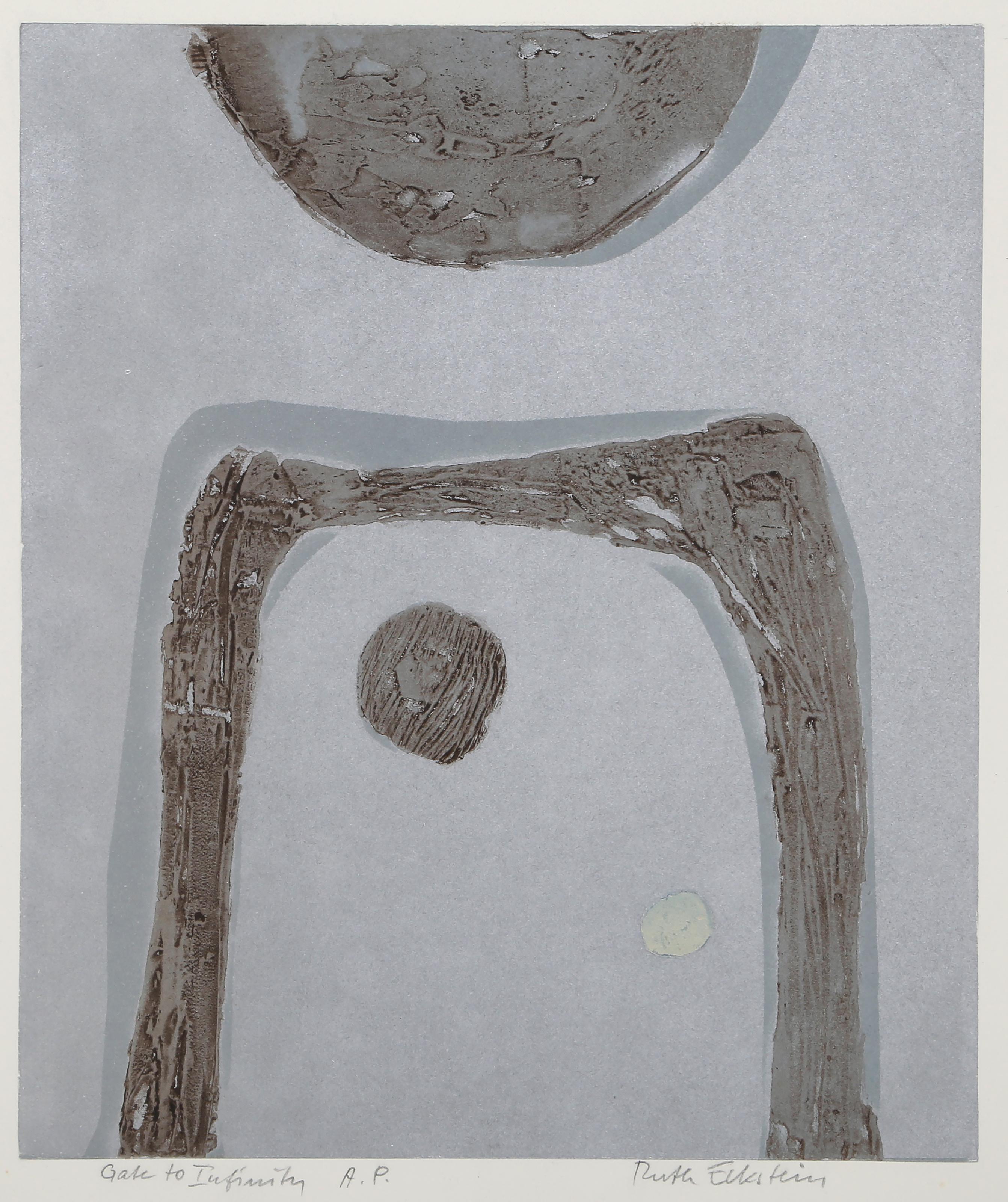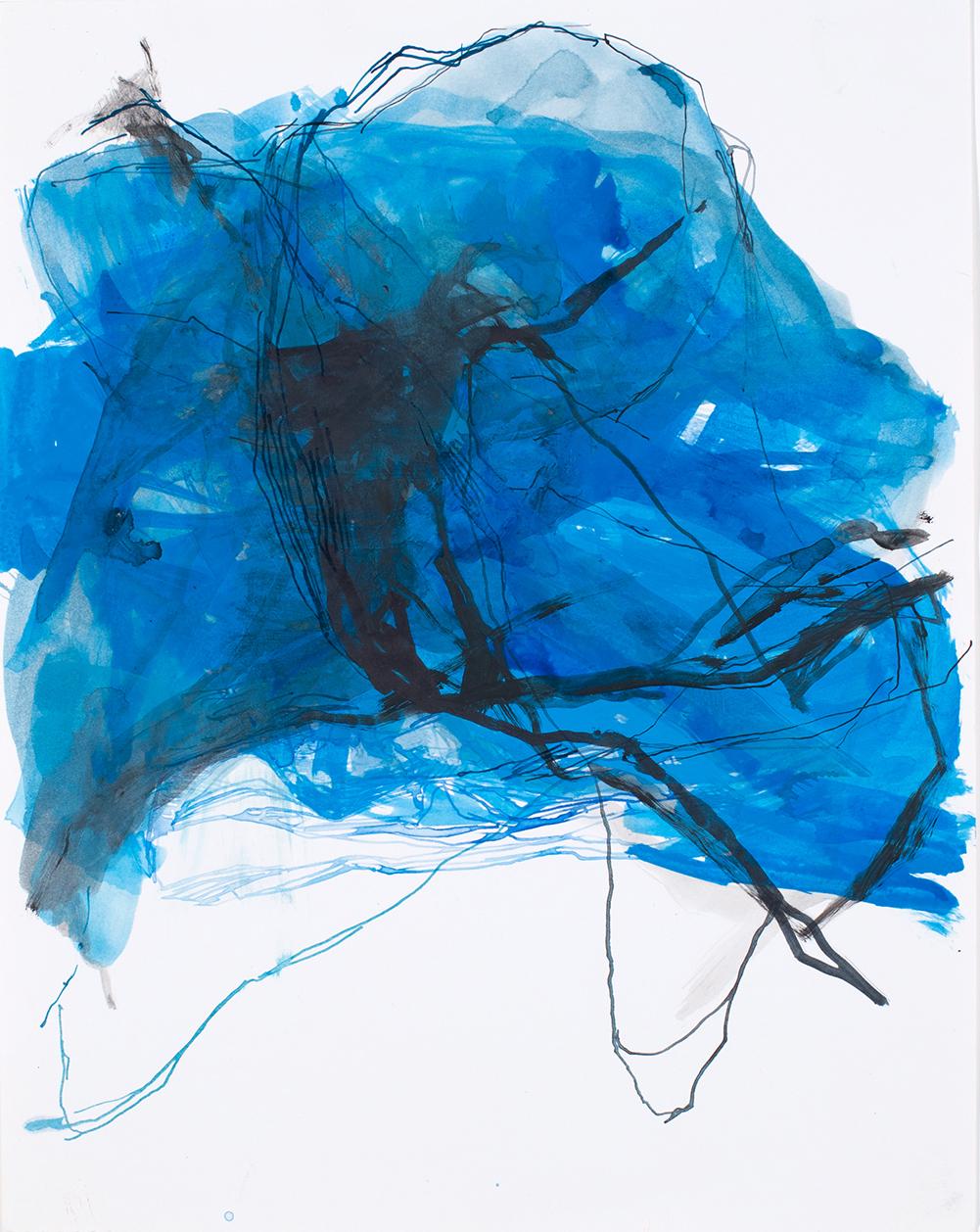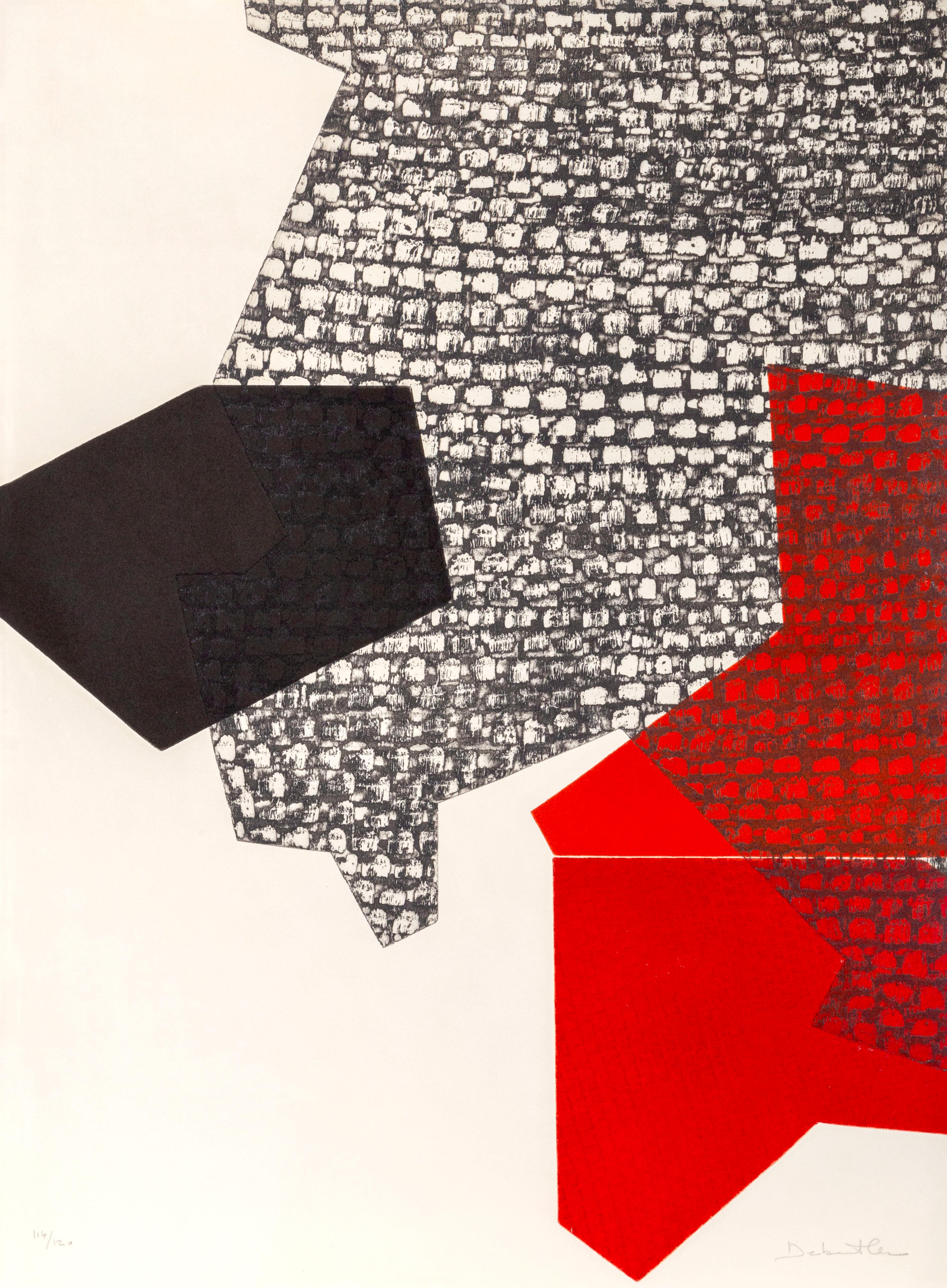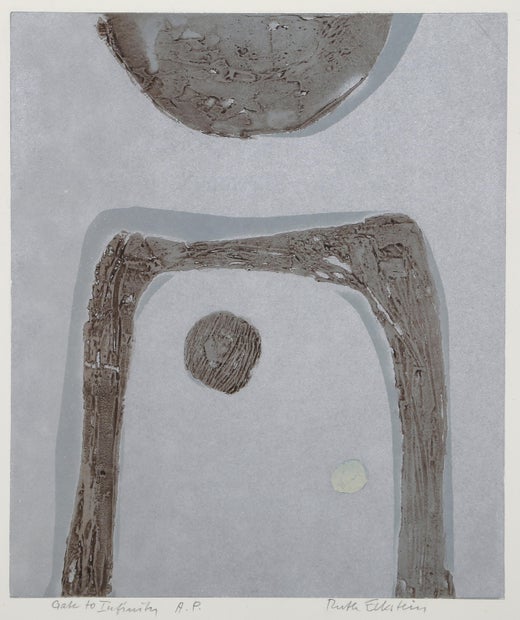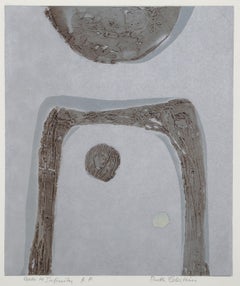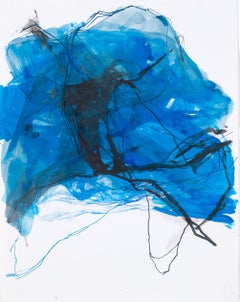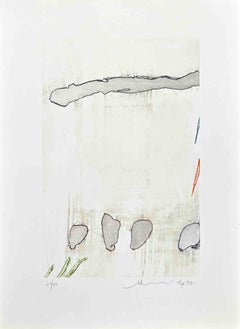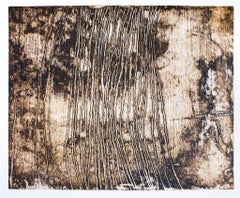Ruth EcksteinTrunk 2, Minimalist Abstract Lithograph by Ruth Ecksteincirca 1975
circa 1975
About the Item
- Creator:Ruth Eckstein (1916 - 2011, American)
- Creation Year:circa 1975
- Dimensions:Height: 25.75 in (65.41 cm)Width: 19 in (48.26 cm)
- Medium:
- Movement & Style:
- Period:
- Framing:Framing Options Available
- Condition:
- Gallery Location:Long Island City, NY
- Reference Number:Seller: RO608151stDibs: LU46616464042
Ruth Eckstein
Ruth Eckstein was born in Nuremberg, Germany on May 11, 1916. As a teenager, she worked in her father’s fabric store and then took an early interest in art. Around 1930, she met George Eckstein, a friend of her brother Gus, who worked in a family toy business. George was active in left-leaning political activities and in 1933, the Nazis arrested him and he spent several months in jail. After his release, he fled to Switzerland and then to Paris. Eckstein joined him there in 1934. She and George lived in Paris for 5 years, where they married and were active members of the German refugee community, working as toy makers producing stuffed dolls. It was in Paris that their first daughter, Margaret, was born. In 1939, fearing a Nazi invasion, George and Ruth left Paris for New York City.
- ShippingRetrieving quote...Shipping from: Long Island City, NY
- Return Policy
More From This Seller
View All1970s Minimalist Abstract Prints
Lithograph
1970s Minimalist Abstract Prints
Etching
1970s Minimalist Abstract Prints
Lithograph
Late 20th Century Minimalist Abstract Prints
Lithograph
1960s Minimalist Abstract Prints
Etching, Aquatint
1980s Contemporary Abstract Prints
Etching, Aquatint
You May Also Like
21st Century and Contemporary Abstract Abstract Prints
Paper, Archival Pigment
1970s Abstract Abstract Prints
Etching
Late 20th Century Abstract Abstract Prints
Lithograph
1970s Abstract Abstract Prints
Etching
Early 2000s Contemporary Prints and Multiples
Etching, Aquatint, Screen
2010s Abstract Abstract Drawings and Watercolors
Ink, Synthetic Paper
Read More
Romare Bearden’s Humanity Infuses His Bright, Bold Art
Through collage, painting and printmaking, the artist foregrounded Black life in America in revolutionary new ways.
Chryssa’s 1962 Neon Sculpture Was Way ahead of the Art-World Curve
By working with lettering, neon and Pop imagery, Chryssa pioneered several postmodern themes at a time when most male artists detested commercial mediums.
